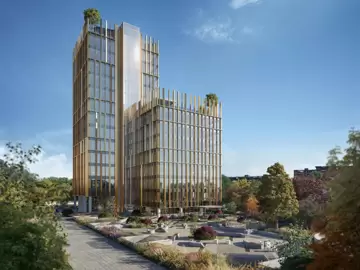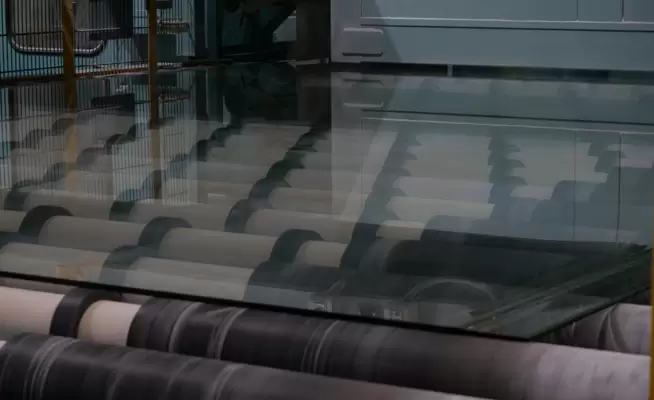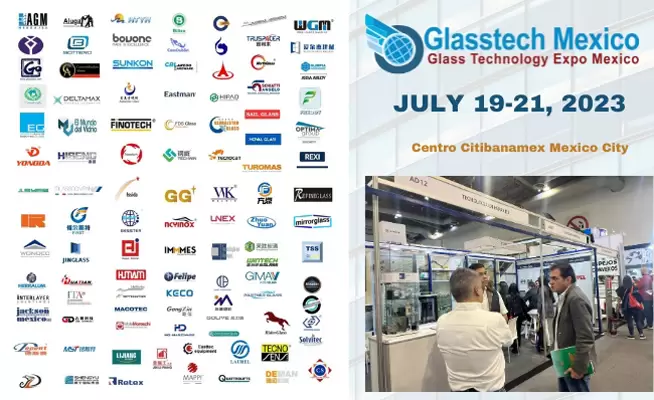AGC Expands Low-Carbon Float Glass Production to France, Unveils Extended Range
AGC Glass Europe, a pioneer in sustainable glass solutions, is making remarkable progress in its commitment to reducing carbon emissions. Following the successful launch of Low-Carbon Planibel Clearlite in Moustier, Belgium, six months ago, AGC’s Seingbouse site in France has now joined the production of this groundbreaking sustainable glass product. This significant expansion is part of AGC’s long-term plan to roll out low-carbon glass across its entire group.
Comprehensive Low-Carbon Glass Range Delivers Sustainability and Versatility
With the commencement of production at the Seingbouse facility, AGC has further enriched its range of low-carbon glass offerings. Building upon the success of Low-Carbon Planibel Clearlite, AGC now offers a comprehensive selection of environmentally friendly glass solutions, including Low-Carbon variants of Stratobel (safety glass), Stratophone (acoustic glass), iplus (thermal insulation glass), Stopray and Energy (solar control glass), as well as toughenable coatings (T-coatings). These sustainable options are available in various thicknesses, ranging from 3 to 10 millimetres, catering to diverse architectural requirements.
AGC’s Carbon Neutrality Roadmap: A Holistic Approach
AGC Glass Europe is committed to achieving carbon neutrality throughout its operations. Embracing a holistic approach, AGC addresses every aspect of the value chain, implementing measures to decarbonize production processes, minimize CO2 emissions from the upstream supply chain, and reduce indirect emissions. AGC’s sustainable initiatives include sourcing raw materials sustainably, employing highly efficient melting furnaces with innovative electro-boosting technology, optimizing pre-consumer cullet flows for increased recycling, and ensuring optimized transportation between AGC plants and customers. The company also generates its own renewable energy through solar and wind power, reinforcing its commitment to a greener future.
The Rise of Sustainable Construction and Investor Demands
The demand for sustainable construction materials continues to surge as investors and building owners recognize the importance of reducing environmental impact. Sustainable buildings not only leave a smaller ecological footprint but also minimize the consumption of non-renewable resources and decrease greenhouse gas emissions. During the construction phase, factors such as the use of decarbonized materials, recyclability, reusability of building components, and waste reduction play pivotal roles in achieving sustainability goals. Moreover, investing in sustainable assets can lead to higher rents, sales prices, and long-term value appreciation, while addressing scope 3 goals and enhancing environmental, social, and governance (ESG) credentials.
AGC Low-Carbon Glass: Leading the Way in Sustainable Projects
AGC’s dedication to sustainable and decarbonized construction is gaining recognition, as evidenced by its inclusion in notable projects that prioritize environmental responsibility. Some of the prominent projects that have specified AGC’s Low-Carbon Glass include:
- UMC Research & Diagnostics Centre, Amsterdam, The Netherlands: The cutting-edge research and diagnostics center in Amsterdam has chosen Low-Carbon ipasol Ultraselect 62/29 (solar control glass) and Low Carbon Planibel Clearlite (single glass) covering an area of 1,600 square meters.
- Nervesa 21, Milan, Italy: This sustainable refurbishment project in Milan aims to achieve the highest ESG credentials and circular economy practices. The building will utilize over 6,500 square meters of Low-Carbon Stratophone 66.2 and Low-Carbon Planibel Clearlite, with a strong emphasis on recycling materials and sourcing locally.
- Mobilis, Brussels, Belgium: D’Ieteren Immo’s redevelopment project in Brussels focuses on creating a multifunctional, innovative, and energy-neutral building with BREEAM Outstanding certification. The façade will feature Low-Carbon Stratobel 44.2 and Low-Carbon Stratophone 44.2.
- NDR Fernsehen, Hamburg, Germany: The new NDR programme building in Hamburg’s Lokstedt district incorporates around 2,000 square meters of Low-Carbon Stratobel iplus 1.1 and Low-Carbon Energy 72/38 in its façade.

AGC Low-Carbon Glass: A Sustainable Choice without Compromise
AGC’s Low-Carbon Glass offers an extraordinary blend of sustainability and performance. With approximately 40 percent less CO2 emissions during the production process, this eco-friendly alternative mirrors the quality, aesthetics, and technical specifications of AGC’s conventional glass. Discover more about AGC’s Low-Carbon Glass range and its remarkable contribution to a greener future at www.agc-yourglass.com.
Source: AGC Glass Europe with additional information added by GlassBalkan







